Asia Travel Pulse
Southeast Asia’s Vietnam, Thailand and Malaysia Expands Direct Flight Routes to Africa: Here’s What You Need To Know
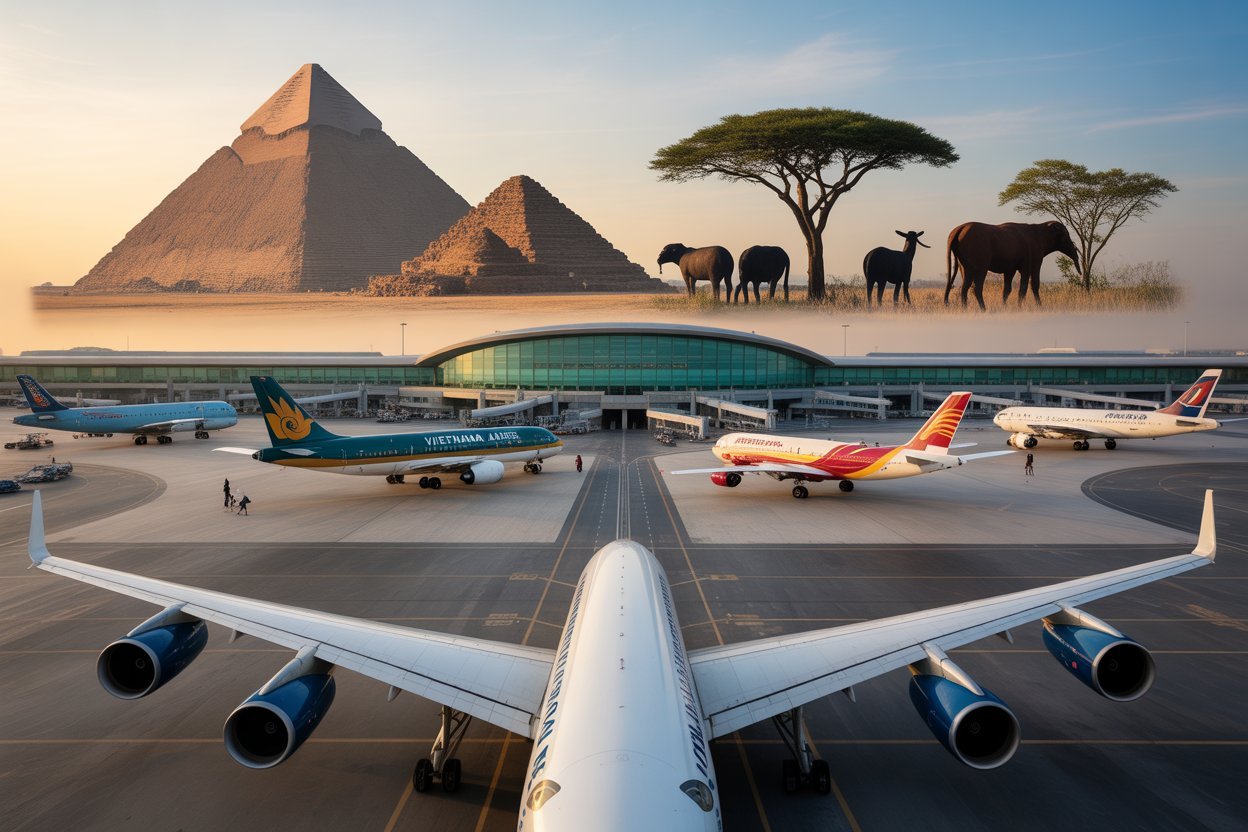
Published on
August 10, 2025 |
The aviation market in Southeast Asia is seeing a significant shift as direct flight routes to Africa is reshaping the tourism landscape. Countries like Vietnam, Malaysia, and Thailand are seeing more direct flight connections to Africa, making it easier for travelers to explore new, exciting destinations across the African continent. This increased capacity, a part of the region’s broader international growth, is opening new doors for travelers eager to explore some of the world’s most unique and off-the-beaten-path destinations.
The expansion of air capacity to Africa has risen by more than 20%, which has attracted more Southeast Asian travelers to Africa for leisure and sightseeing. The culture, landscapes, and history abound, offering a wealth of experiences. The promise of tourism growth in Africa is remarkable, and with the expansion of air routes, more inbound and outbound tourism will be facilitated. Improved air travel alignment is crucial in a post-pandemic context when travelers are looking for novel, adventurous, and culturally rich experiences.
The Growing Air Connectivity between Southeast Asia and Africa
Increased International Routes
Southeast Asia’s aviation sector has long been a dominant player in regional travel, with key airports such as Singapore Changi, Bangkok Suvarnabhumi, and Kuala Lumpur International at the forefront. In August 2025, international flight capacity from Southeast Asia to Africa saw a growth of over 20%, marking a sharp rise in interest in the continent.
This development fits into the overarching pattern where both budget and full-service airlines are trying to provide access to South Africa, Kenya, and Egypt. The increasing number of available routes is, of course, indicative of the expanded interest in cultural exchange, trade relations, and the rapidly growing interest in eco-tourism and adventure tourism.
New Direct Flight Routes
Vietnam Airlines and Malaysia Airlines are expanding their services to South Africa and Kenya in the last quarter of 2025. The Thailand to Egypt route has performed remarkably well, and Bangkok has direct flights to Cairo. Such progress is likely to enhance travel access to Africa for Southeast Asian travelers.
What Does This Mean for Travelers?
For many travelers in Southeast Asia, Africa has long been considered a distant and challenging destination. However, with airlines offering more direct routes, visiting African nations has become significantly easier. For example, the flight time between Singapore and Cape Town has been reduced by several hours, allowing travelers to explore South Africa’s iconic landscapes, from the towering Table Mountain to the pristine beaches along the Indian Ocean coast.
The Rising Popularity of African Tourism Among Southeast Asians
Exploring Unique African Destinations
The rising air travel connectivity is accentuating the growth in Southeast Asia’s interest in African nations, with ease of access to safaris, beach vacations, and cultural tours. Kenya is emerging as a hotspot for wildlife lovers, offering premier safaris in the Maasai Mara. South Africa is witnessing a robust inflow of Southeast Asian travelers as well, particularly those eager to explore the region’s vibrant urban centers and breathtaking landscapes.
Beyond the Safari
Africa is not just about safaris; it also holds deep cultural and historical allure. Countries like Egypt, with its iconic pyramids and ancient monuments, attract history buffs and cultural tourists. The booming art scene in cities like Cape Town and Nairobi also piques the interest of Southeast Asian travelers looking for an immersive cultural experience.
The Impact on Southeast Asian Travelers
With the expansion of flight routes into Africa, the continent is gaining attention for its diverse offerings which transcend beyond the conventional tourist hotspots. In response, travel agencies are developing novel specially tailored packages that incorporate adventure, culture, beach relaxation, and even specially designed tours, enabling travelers to experience Africa more fully.
Economic Benefits for Both Southeast Asia and Africa
Boosting Local Economies
The growing flight capacity to Africa also offers significant economic benefits for both regions. Tourism in Africa, one of the continent’s fastest-growing sectors, will be significantly bolstered by increased access to Southeast Asian travelers. The tourism boom will not only benefit the airline industry but also local economies, as more tourists flock to African cities and landmarks, creating job opportunities in hospitality, tour services, and local retail businesses.
Connecting Cultures
The growing flight connectivity between Southeast Asia and Africa is cultivating cultural relations between the two regions. Southeast Asian tourists are traveling to Africa where they spend their money and unfold their cultures. Also, Southeast Asian countries are displaying more and more African cultures, thereby increasing the awareness of African heritage, cuisine, and arts.
What’s Next for Southeast Asia and Africa?
Opportunities for Further Growth
The future looks bright for both regions as they continue to build on this aviation growth. With increasing flight routes and air capacity, more Southeast Asian countries will gain access to African markets, opening up vast opportunities for collaboration in tourism, business, and trade. As African destinations become more accessible, more people will be able to experience their beauty and diversity.
Airlines are expected to continue expanding their offerings, and with further advances in aviation technology, we can expect even shorter flight times and better travel options. Whether it’s through safari tours, beach getaways, or cultural exploration, the growing air capacity from Southeast Asia to Africa will continue to shape the future of travel in both regions.
Conclusion
The surge in air capacity between Southeast Asia and Africa is transforming the tourism landscape, offering exciting new possibilities for travelers and industries alike. With increased flight routes, more Southeast Asians are discovering the wonders of Africa, from its awe-inspiring wildlife and ancient monuments to its vibrant cultures. As the aviation industry continues to evolve, these connections will pave the way for even greater travel opportunities, fostering cultural exchange and economic growth for both regions.
Asia Travel Pulse
Wendy Wu Tours’ latest Southeast Asia Brochure feature four new additions

Wendy Wu Tours has launched its latest Southeast Asia brochure, unveiling a unique collection of tours designed for culturally curious travellers, featuring exclusive itineraries, behind-the-scenes access, and a variety of travel styles.
The selection offers more meaningful ways to experience the region’s stunning diversity. Among the standout new tours is Wonders of Indonesia, already proving popular with travellers seeking to venture beyond the typical tourist trail. Travellers drawn to river cruising can enjoy the Angkor & Mekong Uncovered which includes a three-night journey aboard the Victoria Mekong. They can also enjoy a festive twist with Christmas on the Mekong, a new 20-day tour featuring Vietnam and Cambodia including a seven-night cruise on the Mekong where travellers can celebrate Christmas.
“Travellers today want more than just sightseeing – they want meaningful encounters, flexibility and the chance to explore deeper,” Wendy Wu Tours Australia managing director, Simon Bell, said. “From cruising through Borneo’s lush jungles, exploring ancient temples in Java, or celebrating Christmas on the Mekong, each itinerary is designed to connect travellers in a way that’s both enriching and effortless.”
New arrivals
The new brochure features four new additions:
- Treasures of Malaysia, Borneo & Singapore (15 days from $8,280pp): Travellers can stroll through the storied streets of Peninsular Malaysia, relax in the cool serenity of the highlands, and experience the vibrant pulse of its cities. In Borneo, they encounter rare wildlife and drift along remote rivers, before concluding their adventure in Singapore – a city where ancient heritage and modern innovation live side by side.
- Wonders of Indonesia (15 days from $7,180pp): From the ancient majesty of Prambanan Temple to the untamed beauty of Komodo National Park, this tour offers a rich blend of cultural immersion and natural wonder. Travellers explore traditional villages, soak in volcanic landscapes, and witness the iconic Komodo dragons in their natural habitat.
- Angkor & Mekong Uncovered (15 days from $6,880pp): Travellers can marvel at the grandeur of Angkor Wat, explore the colonial charm of Battambang, and delve into the stories behind ancient temples and markets. The adventure continues with a serene three-night cruise aboard the stunning Victoria Mekong, taking in local life and scenery.
- Christmas on the Mekong (20 days from $12,380pp): This journey begins among the ancient temples of Angkor, then sets sail on a seven-night cruise along the Mekong, where Christmas morning unfolds with a sunrise over the river. From the bustling streets of Saigon to the timeless beauty of Hoi An, and finally to the breathtaking limestone karsts of Halong Bay, this tour blends celebration, culture and serenity.
The brochure also showcases a refreshed collection of Cruise & Tour options, combining Wendy Wu’s award-winning land itineraries with premium cruise experiences. Travellers can also take advantage of the current Early Bird offer, saving up to $700 per person on 2026/27 Southeast Asia tours.
Asia Travel Pulse
Vietnam And Thailand Overshadowed As This Nation Becomes Southeast Asia’s Most Affordable Destination At Just One Thousand Four Hundred Fourteen Rupees A Day
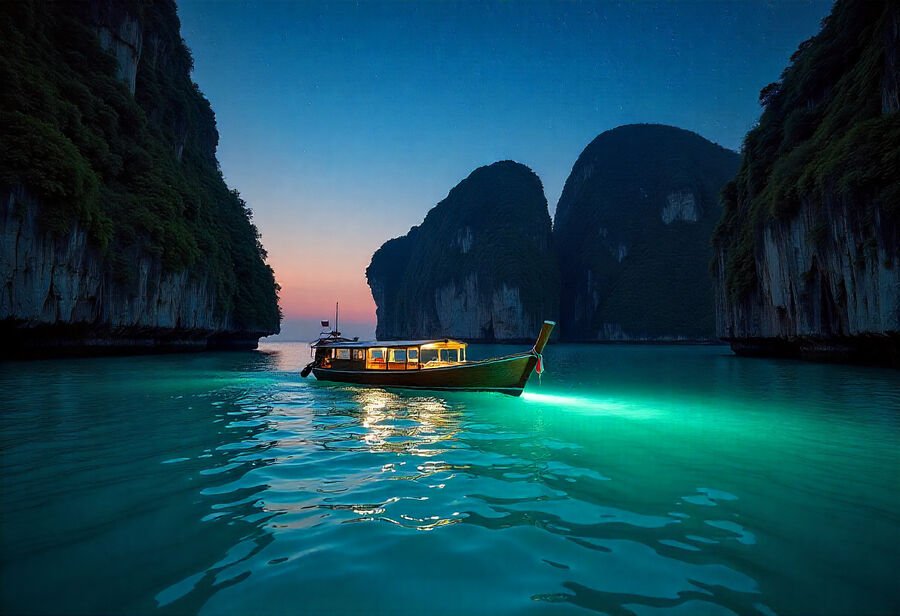
Published on
August 11, 2025 |
Laos has emerged as Southeast Asia’s cheapest travel destination for 2025, offering visitors an average daily expense of just one thousand four hundred fourteen rupees. This low cost, which covers accommodation, meals, and transportation, makes the country a standout choice over regional favorites like Thailand, Vietnam, and Cambodia. Its combination of affordability, natural beauty, and a slower, less commercialized pace gives travelers more value for every rupee spent.
Southeast Asia has always attracted Indian travelers looking for an affordable international escape. Countries such as Thailand, Vietnam, Cambodia, and Indonesia have built reputations as budget-friendly destinations, offering low daily expenses without compromising on cultural depth or natural beauty. In 2025, however, one destination has surpassed them all — Laos. The country now stands as the most economical travel choice in the region, offering unmatched value for visitors.
Laos Leads the Affordability Rankings
Travel research from around the world shows that Laos ranks as the most affordable destination in Southeast Asia. Visitors can explore the country on a budget of only twelve pounds a day — about one thousand four hundred fourteen rupees — and still cover essentials like accommodation, meals, and transport. With the basics taken care of at such a low cost, travelers have the freedom to immerse themselves in Laos’ scenic landscapes, cultural landmarks, and unhurried atmosphere without stretching their budget.
The recognition of Laos as the top budget destination is not limited to regional comparisons. International rankings have placed it as the most affordable country to visit in the world for 2025. This global acknowledgment highlights its position not only as a Southeast Asian gem but also as one of the best-value travel destinations anywhere.
The Cost Advantage in Every Aspect
One reason Laos has claimed the affordability crown is its consistently low costs across all aspects of travel. Accommodation prices remain highly competitive. In key tourist hubs such as Luang Prabang and the capital city Vientiane, travelers can find hostel beds starting from £3 per night, equivalent to ₹353. In the riverside town of Vang Vieng, prices drop even further, with some options available for around £1.50 (₹176) per night.
Food is another highlight of Laos’ affordability. Street markets and local food stalls sell filling meals at extremely low prices. A traditional plate of sticky rice served with grilled pork can cost less than £1 (₹117), giving visitors a taste of authentic Lao cuisine without straining their budget. Even dining in small restaurants often costs far less than in neighboring countries.
Transportation in Laos remains highly budget-friendly. Buses and minivans connect major cities and popular tourist spots for less than four pounds fifty, about five hundred twenty-nine rupees. Those who prefer independence can rent a motorbike for roughly four pounds seventy, or five hundred fifty-three rupees, giving them the freedom to discover remote villages and picturesque backroads at their own pace. Adding to the options, the new Laos–China Railway offers a scenic and affordable link between Vientiane and Vang Vieng. The trip costs around six pounds, or seven hundred six rupees, and blends modern convenience with sweeping views of the country’s lush landscapes.
Entry fees to attractions are also modest. Visiting Kuang Si Falls, one of Laos’ most photographed natural sites, along with the nearby Bear Rescue Centre, costs just £2.30 (₹270). This affordability makes it possible for travelers to experience several attractions in one day without spending much.
A Quiet Alternative to Crowded Tourist Spots
Laos provides far more than budget-friendly travel — it offers a slower rhythm and a distinctive atmosphere that set it apart from nearby destinations. While the beaches of Thailand, the bustling streets of Vietnam, and the iconic temples of Cambodia draw heavy tourist traffic, Laos retains a calm, unhurried charm. Travelers often step into towns where daily life unfolds gently, framed by sweeping mountains, winding rivers, and age-old villages that preserve their traditions.
The country’s charm lies in its unspoiled landscapes and cultural authenticity. Whether it’s watching the sunset over the Mekong River, hiking to hilltop viewpoints, or exploring centuries-old Buddhist temples, travelers can immerse themselves in experiences that feel genuine and unhurried. This makes Laos particularly appealing for those seeking a break from fast-paced travel itineraries and heavily touristed spots.
Rising Tourism in 2025
Despite its peaceful image, Laos is beginning to see increased interest from both domestic and international visitors. Travel data from early 2025 shows that international arrivals rose by 11% compared to the same period in the previous year. This increase translated into more than 1.2 million visitors during the first quarter alone, generating hundreds of millions of dollars in tourism revenue.
Domestic tourism is also expanding rapidly, with local travel nearly doubling compared to the previous year. This growth suggests that while Laos still offers a quieter experience than other destinations, it is gradually becoming more recognized for its value and appeal.
How Laos Stacks Up Against Neighbors
In terms of cost, Laos clearly stands out. Vietnam and Cambodia remain affordable options, with daily expenses averaging around £15 (₹1,768). Malaysia and Indonesia cost slightly more, at about £19 (₹2,239) per day. Thailand, once the top choice for budget travelers, now requires around £24 (₹2,829) daily, making it twice as expensive as Laos.
This gap in prices gives Laos a significant competitive advantage, particularly for travelers who prioritize stretching their travel budgets without sacrificing experiences.
Why 2025 Is the Perfect Time to Visit Laos
For budget-conscious travelers who also value cultural immersion, Laos delivers on every front. The country combines affordability with natural beauty, from mist-covered mountains to lush waterfalls and tranquil rivers. Visitors can explore historic towns, discover hidden temples, sample flavorful street food, and take boat rides along the Mekong — all while keeping daily costs well below what they might expect in other countries.
Its welcoming communities and slower pace also make it an ideal choice for travelers who want to spend more time in one place without feeling financial pressure. Whether planning a short trip or an extended journey, visitors can enjoy meaningful experiences at a fraction of the cost compared to other destinations in Southeast Asia.
Laos has claimed the title of Southeast Asia’s cheapest travel destination for 2025, with daily costs averaging one thousand four hundred fourteen rupees thanks to its low prices for stays, meals, and transport, combined with its scenic, laid-back charm.
A Standout Choice for Budget Travel
As word spreads about its affordability and charm, Laos is likely to see more international recognition. However, for now, it remains a destination where travelers can experience authentic Southeast Asia without the crowds or high prices. For anyone mapping out a Southeast Asia itinerary in 2025, Laos deserves serious consideration as both a cost-effective and culturally rewarding choice.
Asia Travel Pulse
Bengaluru, Amritsar, and Nagpur Benefit from New Vande Bharat Express Services, Boosting Regional Trade, Tourism, and Passenger Comfort
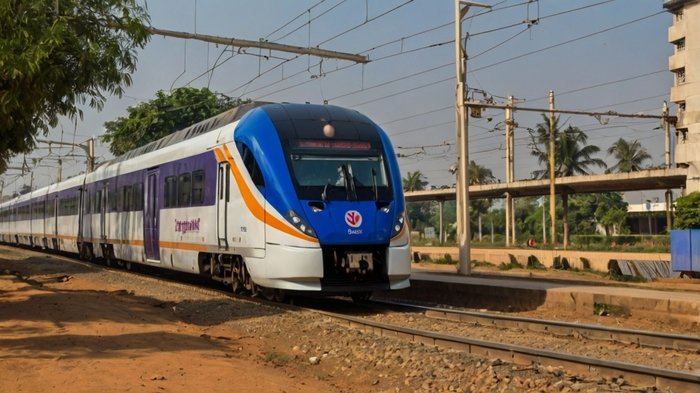
Published on
August 11, 2025 |
The launch of three new Vande Bharat Express routes connecting Bengaluru, Amritsar, and Nagpur brings significant benefits to these cities, helping to boost regional trade, enhance tourism, and improve passenger comfort. The introduction of these high-speed services reduces travel time between major urban centers, making it easier for businesses to operate across regions and boosting local economies. In particular, the Amritsar–Sri Mata Vaishno Devi Katra route is expected to improve access for pilgrims, while the Nagpur–Pune and Bengaluru–Belagavi routes provide faster, more comfortable travel alternatives. With their modern amenities, including upgraded seating, catering, and safety systems, these trains offer a premium travel experience that appeals to both business and leisure travelers, thereby contributing to a stronger tourism infrastructure and a more connected, efficient India.
Vande Bharat Express: Connecting Regions with Speed and Convenience
The launch of these new Vande Bharat routes marks an important milestone in improving national rail connectivity. The event, held at KSR Railway Station in Bengaluru, saw the introduction of the Bengaluru–Belagavi route. This new service is set to significantly reduce travel time between the two cities, offering a faster alternative to road and air travel. It will be particularly appealing to both business travelers and tourists who seek efficiency and convenience.
Alongside the Bengaluru–Belagavi route, two more routes were inaugurated to further strengthen the country’s rail network. The Amritsar–Sri Mata Vaishno Devi Katra route will cater to pilgrims and tourists visiting the famed religious site, offering a smoother and more accessible journey. The introduction of the Nagpur–Pune route will also provide a quicker, more comfortable travel option for residents and visitors in Maharashtra, further facilitating regional travel.
Vande Bharat Express: A Catalyst for Economic Growth
The expansion of the Vande Bharat fleet is part of India’s broader vision to modernize its transportation system. These trains are known for their high speed, luxurious interiors, and state-of-the-art technology, which elevate the overall passenger experience. With features like enhanced seating, improved catering options, and robust safety measures, the Vande Bharat Express stands out as a leader in the country’s rail sector.
Beyond improving passenger comfort, the Vande Bharat services are expected to have a significant impact on India’s economy. With better connectivity between key cities and emerging regional hubs, these new routes will support local trade, stimulate tourism, and encourage investment in various sectors. The increased efficiency in travel will make it easier for businesses to operate across regions, thereby contributing to economic development.
In addition, the expansion of the Vande Bharat network aligns with India’s commitment to sustainability. As travel options shift towards rail, the reliance on cars and airplanes will decrease, leading to a reduction in carbon emissions. This move is part of a broader effort to promote environmentally-friendly travel while supporting the nation’s growth goals.
Personal Interaction at the Launch Event
The launch event not only focused on the technical aspects of the new routes but also highlighted the personal connections that make such milestones special. The occasion saw a warm engagement with children, underscoring the significance of infrastructure development for future generations. The interaction served as a reminder of the long-term benefits that modern transport systems will bring to the youth of the country, ensuring they have access to efficient, sustainable, and comfortable travel options as they grow.
Boosting Regional Connectivity and Tourism
The Vande Bharat Express routes are designed to enhance regional connectivity and boost tourism in less-accessible areas. By making travel faster and more comfortable, the new services will allow people to explore new destinations with ease, which in turn is expected to attract more tourists to regions like Amritsar, Vaishno Devi, and Pune. For both domestic and international tourists, these routes offer a more appealing alternative to time-consuming and less reliable travel options.
This expansion also promotes the government’s broader objective to develop emerging regions by connecting them with key urban centers. By strengthening travel links, the Vande Bharat services will make it easier for people to move across the country, thus increasing both economic and cultural exchanges.
A Sustainable and Efficient Future for Indian Railways
The impact of these new Vande Bharat routes goes beyond just enhanced travel. The government’s focus on developing high-speed, eco-friendly transport options aligns with global efforts to combat climate change. Rail travel, especially at the speeds offered by the Vande Bharat Express, is one of the most sustainable modes of transportation, contributing to a greener future.
By reducing emissions and encouraging more sustainable modes of transport, the launch of these routes plays a crucial role in India’s long-term environmental strategy. As India continues to grow, investments in rail infrastructure like the Vande Bharat Express will be essential in managing the country’s expanding transportation needs without compromising environmental goals.
The launch of three new Vande Bharat Express routes connecting Bengaluru, Amritsar, and Nagpur enhances regional trade, tourism, and passenger comfort by offering faster, more efficient travel options with modern amenities. These services support economic growth and improve connectivity across key urban and regional hubs.
In conclusion, the introduction of the three new Vande Bharat Express routes marks an important development in India’s journey toward a more efficient, sustainable, and modern transportation system. These services not only offer faster, more comfortable travel for millions of passengers but also contribute to economic growth and environmental sustainability. As the rail network expands, India is positioning itself as a leader in sustainable transportation while meeting the evolving needs of its citizens and economy.
-

 Brand Stories3 weeks ago
Brand Stories3 weeks agoBloom Hotels: A Modern Vision of Hospitality Redefining Travel
-

 Brand Stories2 weeks ago
Brand Stories2 weeks agoCheQin.ai sets a new standard for hotel booking with its AI capabilities: empowering travellers to bargain, choose the best, and book with clarity.
-

 Destinations & Things To Do3 weeks ago
Destinations & Things To Do3 weeks agoUntouched Destinations: Stunning Hidden Gems You Must Visit
-

 Destinations & Things To Do2 weeks ago
Destinations & Things To Do2 weeks agoThis Hidden Beach in India Glows at Night-But Only in One Secret Season
-

 AI in Travel3 weeks ago
AI in Travel3 weeks agoAI Travel Revolution: Must-Have Guide to the Best Experience
-

 Brand Stories1 month ago
Brand Stories1 month agoVoice AI Startup ElevenLabs Plans to Add Hubs Around the World
-

 Brand Stories1 month ago
Brand Stories1 month agoHow Elon Musk’s rogue Grok chatbot became a cautionary AI tale
-

 Brand Stories3 weeks ago
Brand Stories3 weeks agoContactless Hospitality: Why Remote Management Technology Is Key to Seamless Guest Experiences
-

 Asia Travel Pulse1 month ago
Asia Travel Pulse1 month agoLooking For Adventure In Asia? Here Are 7 Epic Destinations You Need To Experience At Least Once – Zee News
-

 Brand Stories1 month ago
Brand Stories1 month agoChatGPT — the last of the great romantics

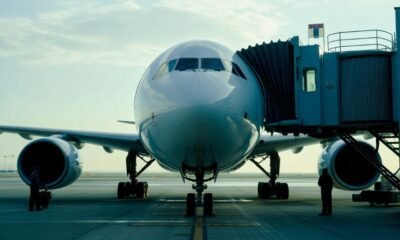

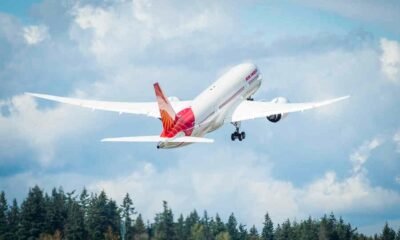

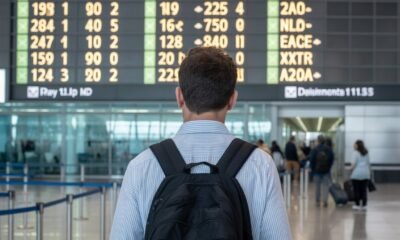







You must be logged in to post a comment Login